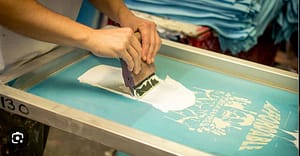
Screen printing on garments involves several key parameters that contribute to the quality and outcome of the final print. Here are some essential parameters:
1. **Type of Fabric**: The choice of fabric significantly affects the printing process. Different fabrics like cotton, polyester, or blends require specific inks and printing techniques.
2. **Screen Mesh Count**: The mesh count of the screen determines how much ink passes through onto the garment. Higher mesh counts are used for detailed designs and finer prints, while lower mesh counts are suitable for bolder, less detailed images.
3. **Ink Type**: The type of ink used in screen printing varies based on the fabric and desired effect. Plastisol, water-based, and discharge inks are commonly used, each with unique characteristics.
4. **Squeegee Hardness and Angle**: The hardness and angle of the squeegee influence the amount of ink applied and the sharpness of the image. A harder squeegee is typically used for more detailed work.
5. **Curing Temperature and Time**: Proper curing of the ink ensures durability. The temperature and duration of curing depend on the ink type and fabric.
6. **Screen Tension**: Proper tension on the screen is crucial for an even and clear print. Inconsistent tension can lead to blurry or distorted images.
7. **Off-Contact Distance**: This is the gap between the screen and the substrate during printing. Adjusting this distance helps in achieving a clean print without smudging.
8. **Pressure and Speed of Squeegee**: The pressure applied and the speed at which the squeegee moves over the screen affect the ink deposit and the uniformity of the print.
9. **Artwork Preparation**: The design must be properly prepared and separated into different colors if multicolor printing is involved. This step is crucial for achieving a high-quality print.
10. **Emulsion and Exposure Time**: The choice of emulsion and its exposure time to light when creating the stencil affects the detail and durability of the print.
11. **Platen Type and Size**: The platen holds the garment in place during printing. Its size and type should be appropriate for the garment being printed.
12. **Environment Conditions**: Ambient conditions like humidity and temperature can affect ink viscosity and drying time.
Understanding and controlling these parameters is crucial for achieving high-quality, consistent results in garment screen printing.
Ankur Gupta- SHORI CHEMICALS PVT LTD